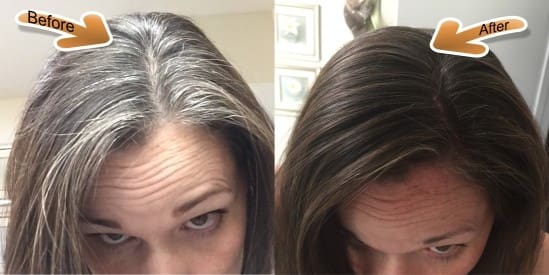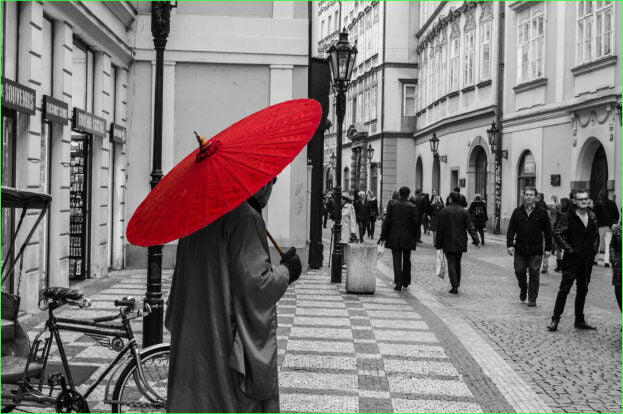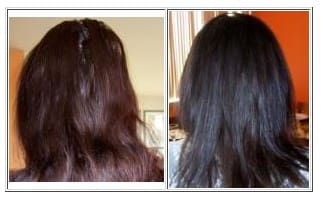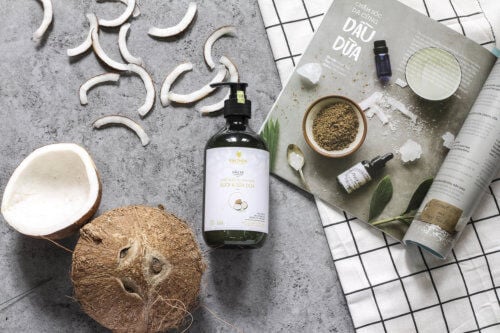
Henna hair dye has long been celebrated as a remarkable product with a storied past that dates back centuries, if not millennia. Ancient Egyptians utilized this versatile substance for various applications, including hair coloring. It’s crucial to distinguish henna from indigo (Indigofera tinctoria), another plant-based dye known for producing deep black hues. When combined, henna and indigo create a range of brown shades.
In the early 20th century, individuals often had to concoct their own mixtures to achieve different shades of brown or red, a process that was particularly labor-intensive and time-consuming. Consequently, it was primarily redheads who embraced henna due to the complexity and dedication required.
Today, the combination of a small amount of henna with indigo can produce black tones or even shades of purple, especially when mixed with beer instead of water. The alcohol in beer alters the dye molecules, resulting in deep or vibrant purple hues, which are especially striking on light or white hair.
Understanding Lawsonia inermis and Its Applications
Lawsonia inermis, the botanical name for henna, is used in various applications, including sunless tanning lotions, temporary tattoos, and fabric dyes. However, obtaining fresh, natural henna can be challenging due to its susceptibility to spoilage from exposure to sunlight and oxygen. Proper packaging is essential to extend its shelf life, although it can be costly. It’s advisable to explore alternative hair products before committing to henna. To prolong the color’s longevity, rinsing hair with apple cider vinegar before application can help minimize color bleeding. For more tips on maintaining your henna hair color, read on.
How to make your henna hair color last longer.
Natural Hair Dye That Stands Out in The Crowd

Natural hair dye enthusiasts, take note: brands like EarthDye and Harvest Moon have perfected the process, making them top choices for henna hair dye. These brands use triple-sifted, naturally soil-fed henna harvested annually to ensure fresh, high-quality dye. This dye not only penetrates the hair but also protects it from harmful UV rays, providing a softer, thicker, and healthier appearance. Additionally, it blends seamlessly with your natural color, making it an excellent option for those with brown hair and strands of gray or white. You can even mix different colors to create custom shades, such as blending ash brown with light brown for a lighter hue or combining burgundy with mahogany for a rich chocolate brown. However, always test a small area before applying henna to your entire head, as it can be very permanent for some individuals.
Henna Hair Colors Do Not Lighten Hair

Henna hair dye cannot lighten hair. If you have black or dark hair and wish to go lighter but want to avoid chemical dyes due to sensitivity or health concerns, your options are limited. Pure henna powder or natural deep red henna is your best bet. Reds can show up on black hair in the sun or under good lighting, but browns, blonds, burgundy, or mahogany will hardly be noticeable. If you have gray hairs coming in, a soft black dye can be used, or if you have jet-black hair, you might need to follow a two-step process.
The two-step process, while time-consuming, offers excellent conditioning benefits. It involves first applying natural henna (which turns gray or white hair red) and then applying indigo, which reacts with the henna to produce the darkest black. The duration of application can vary depending on hair type; more absorbent hair requires less time. Typically, henna is left on for one hour, followed by indigo for another hour. However, many customers have found success with shorter application times, achieving remarkable results.
Benefits of Ayurvedic Hair Dye

Harvest Moon® and EarthDye™ offer Ayurvedic hair dyes containing natural conditioners derived from plants traditionally used in India and surrounding regions. When used with henna and indigo, the results are truly impressive. Recent studies have shown a stark contrast between those using chemical hair dyes and those opting for henna. Users of chemical dyes often experience significant hair loss, split ends, itchy scalp, dry mouth, swallowing issues, rashes, and difficulty growing long hair. In extreme cases, they may even require hospitalization. Hair grows slowly, and recovery from chemical damage can be a long process. Henna, on the other hand, promotes faster hair growth, with some users experiencing up to half an inch of growth per month.
Henna Application Process
Having tested numerous brands, I can confidently say that not all henna products are created equal. The process shouldn’t be overly complicated, yet some manufacturers make it so. For instance, some require letting the dye sit for three days or mixing and applying it within three minutes. Such complexities often result in a disappointing experience.
Applying quality, fresh, natural henna hair dye should be straightforward. It should take no more than 15 minutes to mix and apply, even for normal-length hair. The key is using fresh ingredients and proper application techniques. While many new brands make false claims about their products, true expertise in henna dyeing comes from a deep understanding of Lawsonia inermis.
We’ve spent thousands of hours researching and debunking myths to offer the best and easiest henna solutions. Education and premium ingredients are essential. We’ve heard countless stories of failed attempts with liquid henna dye or other recipes. The issue is that indigo only releases dye molecules for a few hours, while pure henna can do so for months. Therefore, freshly mixed henna is always better.
Modern Henna Hair Dyeing Technique:
Wash your hair twice with a clarifying shampoo, skipping the conditioner. Towel-dry your hair before application. Although damp hair is preferred, dry hair is also acceptable. Remember to wear gloves and protect your surroundings.
Mix the henna powder with enough warm tap water (approximately 1 ¼ to 1 ½ cups per 100 grams) until you achieve a pudding-like consistency. A thicker consistency is generally preferable.
Apply the mixture using a hair dye application brush, starting from one ear to the other in layers. Then, proceed to the back of the head in sections, pressing the paste down as you go. If using a shower cap, ensure it has holes for ventilation.
Leave the dye on for 45 minutes to an hour, but no longer than 1.5 hours, and rinse until the water runs clear. Those with thick or curly hair may find using a cream conditioner helpful during rinsing. Do not shampoo for at least 18 hours; ideally, wait 24 hours but no longer than 48 hours.
BEARD APPLICATION:
Failure to follow these instructions will result in poor results. EarthDye is permanent and easy to apply.
Gently clean facial hair/sideburns with shampoo using a toothbrush or beard brush twice. Avoid scrubbing vigorously, as this can irritate the skin. Not using a brush will not eliminate facial oil, so be sure to use one!
Mix enough tap water (do not use distilled or bottled water) to achieve a thick pudding consistency (only mix what you need and store the remaining powder in a ziplock bag in a cool, dry place).
Using a spoon or application brush, apply evenly to facial hair until completely covered. Ensure to cover all hairs; if the tips of the hair stick out, they will not be colored, resulting in a peppered effect. Leave on for 45-60 minutes, but no longer than 1.5 hours, and rinse. You can shampoo 12-24 hours later, but no longer than 48 hours.
Tips: Gray or white hair may turn red/green for the first 12 hours, darkening overnight. Dye hair early in the evening.
The dye will not permanently stain the face or hairline. If dye is present on the face, it will fade within several hours.
Oil treatments can prevent browns and reds from working. If performing oil treatments, wash the hair three times prior to application.
Benefits of Henna Hair Dye
Henna hair color helps hair growth and protects the hair from harmful UV sunlight. It works the opposite of chemical hair dye. Chemical hair dye kills the protein and alters the color. Henna hair dye covers the protein and allows the hair to breathe naturally for optimum hair results. Your hair will grow faster, softer, and healthier using natural hair dye.
Our dye works on all races, men and women.
WHAT COLOR DOES HENNA HAIR DYE COME IN?

While pure henna is one color – red-orange, many other colors are called henna hair dye as well. I have even heard it called black henna hair dye, which does not exist but is used for marketing purposes as well as other colors. Red henna is the one ingredient in all colors, so in a sense, it is henna hair dye. Mixed with indigo, it creates browns and blacks as well as other colors. The colors are usually always Earth colors except for purple.
Henna Dye Hair Colors
Colors include and are not limited to because you can mix any colors to create new colors and buy using different soaps or adding alcohol you can produce purples and golden blond:
- Natural Red
- Vibrant Red
- Strawberry Red
- Deep Red
- Burgundy
- Soft Black
- Jet Black
- Mahogany
- Dark Brown
- Medium Brown
- Light Brown
- Ash Brown
- Blond
- Copper Brown (auburn)
The lighter colors are only visible on light-colored hair. If you are using oils or cocoa butter in your hair, shampoo your hair well prior to application. If you are doing pure henna, no worries it loves oil, while we do condone oil in the hair, it will stain right over it. Any other colors, on the other hand, have the opposite effect and will not work on oil-treated hair. The great news is Harvest Moon hair dye will whip your hair into shape, and you will finally be free of the vicious oil cycle. Oils are not good for your hair, but that is for another article, another time.
How To Care For Your Beautiful Healthy Hair

So now that you have taken that step and you have happy, healthy, shiny, thick, beautifully healthy hair, how do you take care of it?
- Stay away from hot irons. The henna will handle the heat, but your hair does not. Over time flat irons destroy the protein and hair. Would you stick your finger in a flat iron? Probably not on purpose. Just remember your hair is a living part of you that has no feelings. Just because you can’t feel the hurt does not mean it is not hurting your hair.
- Ditch the chemical hair straightener. Hair straighteners are loaded with bad chemicals, in some cases just as bad as chemical hair dye, so why would you do that? Did you know most men prefer curls over straight? Straighteners also cause many reactions with indigo, leaving a Grinch green in its wake.
- Back off the perms. Our henna will work over perms, before or after. However, do you really want to put ammonium thioglycolate on your hair? Really? Thioglycolic acid? Why go with natural hair dye and then nuke it? I will have the virgin martini, please!
- Oils and hair dye do not get along. We all know you can’t mix oil and water, hair dye is no different. If you want to strip the browns to reds, use oil. It also thins the hair and causes split ends. Eat proteins like almonds and fatty fish instead. Remember, hair repair takes a long time to see the results, so be patient.
- If possible, use sulfate-free, paraben-free, preservative-free, and low-oil shampoos. You will need a specialty shop for this.
- Stay away from chemical hair dyes for good. With Harvest Moon hair dye, you can certainly go back to chemical hair dye, but why would you? It ruins your hair and our environment, so keep it natural. One use of chemical hair dye can set your hair back years.
- Look for natural gels. If you find one you love, let us know so we can tell others. You want a gel that dries and does not have alcohol or chemicals in it. Good luck and happy hunting. We are still searching, but like on our ash brown, we never give up!
- I hope you have learned more about henna hair dye, and if you have questions, please post them below. If you are looking to buy a henna hair dye, we hope you choose EarthDye. We work hard and we take it seriously as every business should. We love our customers and do everything in our power to keep them looking fabulous and healthy-looking.
Resources:
What is henna hair dye?
How long does henna Last?
Buy Henna Hair Dye
Henna hair dye myths
Henna for Beards
Henna Hair Dye Ingredients
Henna Videos Doing Hair
Before and After Henna Beard Dye
Before and After Henna Hair Dye
Why use henna on your hair and beard?
Henna Hair Dye Colors
How to lighten the henna in your hair
Should you wrap your hair after applying henna hair dye?

About the author:
Rod Harper became obsessed with henna hair dye in 2006. He takes business seriously and enjoys helping customers restore their hair’s natural beauty! Rod has tested henna in several thousand different ways, literally debunking myths and changing how henna is used and applied.